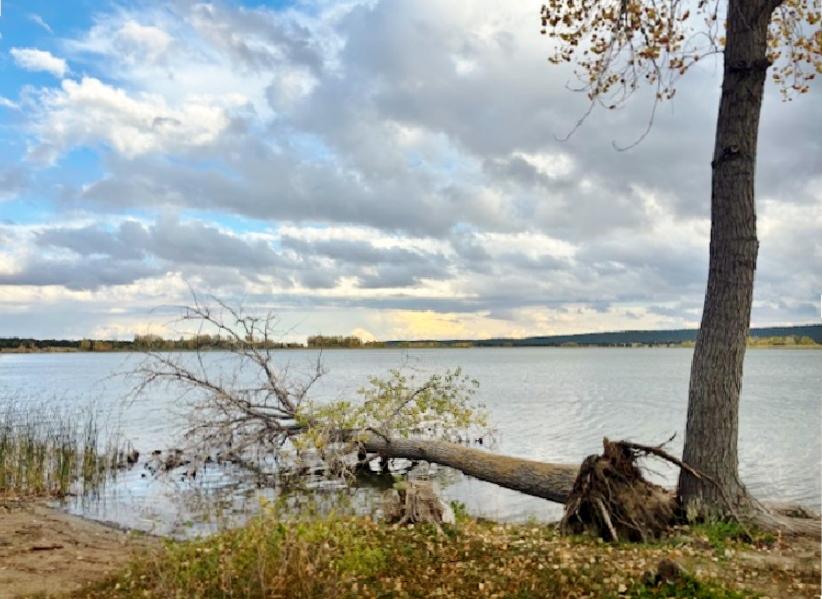Hazardous and invasive trees being removed at Lathrop State Park

 Bill Vogrin
Bill VogrinSoutheast Region Public Information Officer
719-466-3927 / [email protected]

Photo courtesy of Colorado Parks and Wildlife
Oct. 25, 2024
Hazardous and invasive trees being removed at Lathrop State Park; new trees being planted
WALSENBURG, Colo. – Hazardous and invasive trees are being removed from Lathrop State Park to protect guests and improve the ecosystem.
Foresters at the Colorado State Forest Service recently inspected the park and wrote a management plan to help preserve the health of the forest. The plan included removing trees that are not healthy and present a hazard.
The plan defined a hazardous tree to be one that is prone to falling because it is dying, leaning, or resting on other trees.
“Of course, we can’t risk trees falling on our guests or staff,” said Park Manager Stacey Koury. “And it’s important we remove invasive species. The plan identified a number of invasive species of trees with the most common being Russian Olive or tamarisk. Since they are not native to the region, they must be removed.”
Trees that are near public areas have been prioritized for removal before they are an imminent danger to people. The foresters identified a high concentration of hazardous trees near the shoreline on the west side of Martin Lake, which is where the most work has been done.
Knowing that many hazardous trees will need to be removed in the future, park staff members already have begun planting native trees in other areas of the park to provide shade and habitat in campgrounds and natural areas.
Park staff have also documented growth of new trees in the space that was created from the hazardous tree removal.
Visitors are welcome to call the park at 719-738-2376 with any questions about this project or ideas of where to plant new trees.
Colorado’s first state park in 1962, Lathrop covers 1,460 acres and features two lakes.
Martin Lake offers water skiing, power and sail boating. Because Martin is a warm-water lake, it makes it great for swimmers.
Horseshoe Lake is a calm-water lake reserved for canoes, kayaks, sail boats and other small boats that do not create a wake. Catfish, bass, walleye, trout and bluegill thrive in both lakes. Horseshoe Lake is known for its large tiger muskies.


Colorado Parks and Wildlife (CPW) is an enterprise agency, relying primarily on license sales, state parks fees and registration fees to support its operations, including: 43 state parks and more than 350 wildlife areas covering approximately 900,000 acres, management of fishing and hunting, wildlife watching, camping, motorized and non-motorized trails, boating and outdoor education. CPW's work contributes approximately $6 billion in total economic impact annually throughout Colorado.
DISCLAIMER: The Colorado Parks and Wildlife (CPW) website maintains press releases containing historical information that may no longer be accurate. Press releases are dated, which should be noted to determine whether the information provided is current. Please review our current regulations and brochures for up-to-date information.